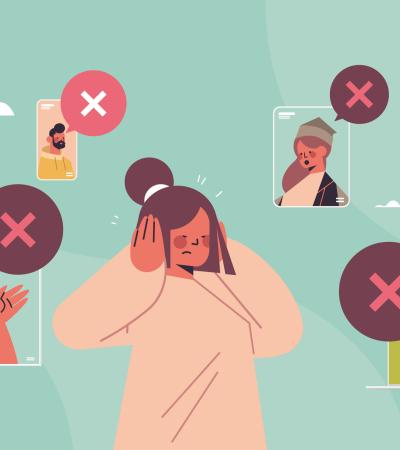Although video calls are more common these days, tele-conferencing may be the more accessible option for some members of your community.
People with poor internet connectivity and those who lack tech skills can be left behind when it comes to video conferencing and video-based programs. Tele-conferencing can be easier to use and still offer the same benefits as a video call.
Here are a few tips if you decide to host a tele-conference conversation program:

Share relevant materials with participants in advance
It's always a good idea to prepare participants in advance; it's especially important for phone conversations, where you can't share a document on your screen to quickly get everyone up to speed.
Share materials at least three days in advance to the call; the sooner you can get it to them, the more likely they will have had time to look at it. Not everyone will have had a chance to read it, so encourage them to have it handy during the event.
Start your event with "housekeeping"
Let folks know how to utilize the phone technology options, such as muting and unmuting themselves. When we gather in groups, background noise on a phone can be a disruption. Encourage participants to keep themselves muted when they are not speaking.
If you have the ability to mute participants on your conference line, make sure you have the instructions on how to do it handy during the event. If there is too much background noise, you may need to mute everyone and then continue.
Develop a speaking order
Video offers visual cues when a person is about to speak; they might unmute or take a breath, alerting others to listen. One of the trickier aspects of phone conversations is getting people to speak without talking over one another.
Ask people to identify themselves by name each time they speak and take down the names of all participants at the start of the call. Since you won't be able to see your participants, you will need that list to be able to call on people and manage participation.
Asking for identification allows everyone to connect the names with the voices; it also helps you keep track of who might be dominating and who isn't speaking. Ask each person to identify themselves and speak to your first question or prompt. This could be an incebreaker or a simple question, such as "What interests you in this conversation?" This will give everyone a chance to speak.
As you proceed with the conversation, you could continue to use this speaking order to create a visual "circle," asking people to first go "around the circle" and then open up for discussion. Expect to call on people to speak, at least to start, since the group won't have usual cues to know when someone is getting ready to talk.
This works best with smaller groups for time management, but can help make participation more manageable when you can't see everyone.
Model good teleconference etiquette
Speak clearly, and speak at a moderate cadence. If you are a fast talker, be sure to slow down a bit so that everyone can understand you. Try not to interrupt participants unless you need to refer back to ground rules, continue onto the next part of the conversation, etc.
Stick to your schedule
Start on time and end on time. Most teleconference events last 60 to 90 minutes at the most, so plan your agenda accordingly. If you want to allow extra time at the end for folks to ask you questions or talk some more, that's fine, but make sure you officially end the event at the time you said you would.
Have you tried a tele-conference call? Share your own experience below.



